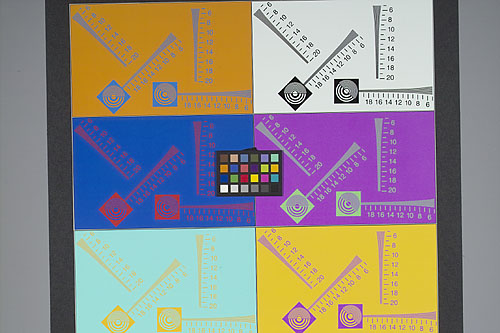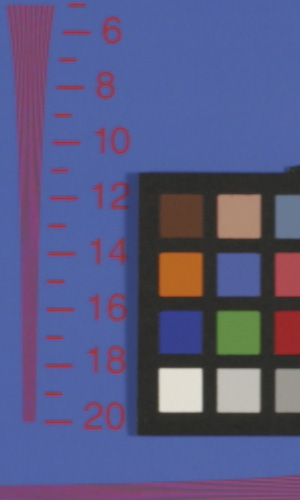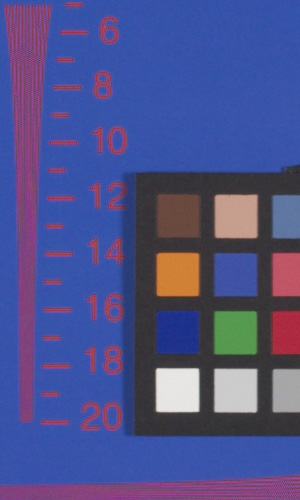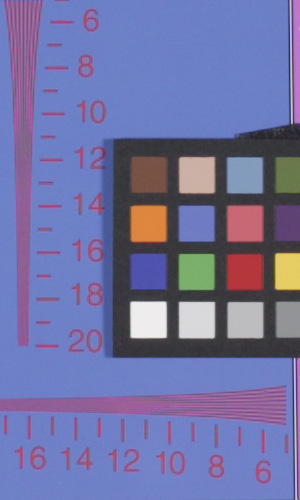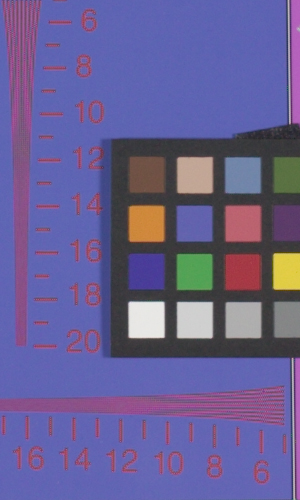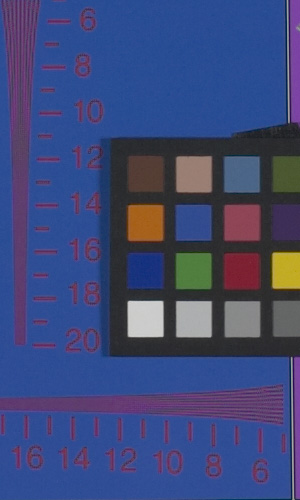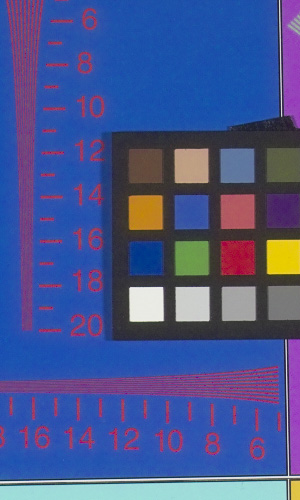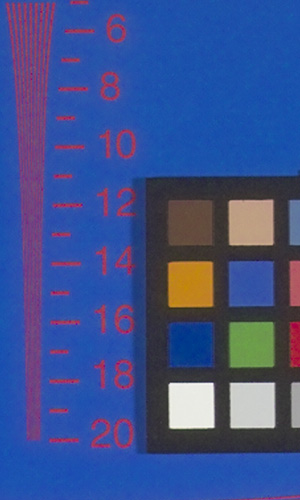|
|
The Art of Raw Conversion #005"Fooling the Bayer Sensor"
Note by
Uwe Steinmueller
|
|
There is a lot of discussion on the net how much the Bayer sensors (read about it here) limits the quality of digital images. The company Foveon produced the first real world full RGB chip (called X3) that is currently available in the Sigma SD9 digital SLR. Of course Foveon uses all kind of samples to demonstrate their point. I had today the opportunity to use their Bayer sensor (and raw converter) fooling targets to make some test shots myself. Some will claim that these test are not real life and of course we as nature photographers agree. These tests demonstrate what we see also in real world photos , but off not at such an extreme. The test chart I used was exploiting the fact that any Bayer sensor has a hard time to capture fine color to color transition and especially if the transition is red-blue. All shots were taken by myself with my own or manufacturers loaner cameras. The light was supplied by two studio flash units. Cameras used:
All photos were taking with from the same view point. That means the 1Ds covers a larger field of view. Aperture was f/8 and shutter sped 1/160s. The exposure was checked with the histogram but of course varies slightly. The images were all white balanced in the different raw converters on the second brightest patch of our cute new micro GretagMacbeth Color Checker (will be our new outdoor gray and white balancing tool). The output was not sharpened in the raw converters and noise removal was set to minimum. Best you download the files and view at more that 200%. Even better to download the raw files and experience yourself.
|
|
| Canon 10D | |
|
|
| Canon 1Ds | |
|
|
| Sigma SD9 | |
(that amplified the noise in the blue channel) |
|
| Findings | |
| It is easy to se that the Bayer sensors and the raw converters have a hard time handling the red-blue transitions and also show some halo at the edges of the digits. The X3 sensor handles these transition very well but also shows a higher level of noise in the blue channel (we might have also underexposed the SD9 image). Do not forget that the two Canon cameras are also known to produce exceptional low noise at ISO 100. | |
| For Comments post in our News Group |





